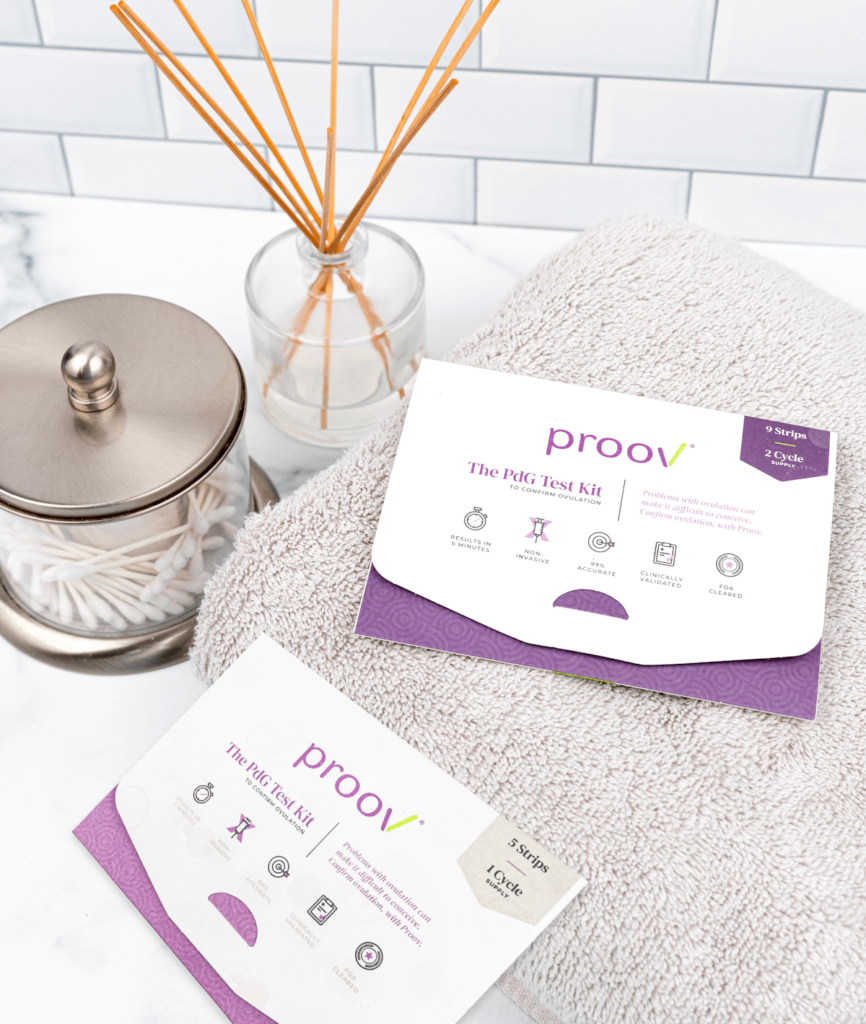This is a guest post by Dr. Amy Beckley, Ph.D., Founder and Inventor of the Proov test.
Ovulation is a critical piece of the pregnancy puzzle. After all, without an egg, there is no chance at conception! Learn more about how “successful” ovulation can help you reach your fertility goals faster.
What is ovulation?

Ovulation is the release of an egg from a mature follicle in the ovary. The egg then travels to the uterus through the fallopian tubes. An egg can only survive for about 12 to 24 hours after ovulation. If it meets sperm and fertilizes, conception has occurred.
Ideally, ovulation should happen each cycle. Follicle-stimulating hormone (FSH) stimulates the follicles to grow, and the ovary recruits the “best egg” from the lead follicle.
As it grows and matures during the first half of your cycle, the egg produces estrogen, which stimulates luteinizing hormone (LH). LH is the hormone that surges and triggers the follicle to release the egg. Once the egg is released, the empty follicle (now called the corpus luteum) produces progesterone, nourishes and prepares the uterine lining for implantation.
When does ovulation occur?
In an average 28-day cycle, ovulation usually occurs around day 14. But every woman and process is different, so tracking LH and determining your fertile window can give you a better understanding of when you ovulate!
Why is ovulation important?
Ovulation is a sign of health because it implies a healthy hormone balance. Unless pregnancy, lactation, or menopause are in the picture, irregular ovulation patterns may be a sign of a more significant health issue. If you suspect you have irregular ovulation, we recommend consulting your doctor.
Irregular or absent ovulation is one of the most common causes of female infertility. In fact, ovulatory disorders are the cause of infertility in about 25% of all infertile couples. But even if an egg is released each cycle, if sufficient hormone levels are not supporting it, it can still be tough to conceive.
Enter “successful” ovulation!

Ovulation is considered “successful” when an egg is released, and progesterone remains elevated for long enough to allow for the best possible chance at conception. Progesterone is the hormone responsible for stabilizing the uterine lining and making it receptive to an embryo. After the ovary releases the egg, the empty follicle produces enough progesterone to support the embryo’s implantation.
How do you know if ovulation was successful?
To ensure your ovulation has been successful, you first need to test your LH levels or use another ovulation prediction method to time intercourse around ovulation. You then need to test progesterone to confirm an egg was released and levels remained at an optimal level throughout your luteal phase.
How do I test my progesterone levels?
You can get a progesterone blood test on cycle day 21 or about seven days after ovulation. However, cycle day 21 progesterone tests assume that every woman ovulates precisely on day 14, which we know isn’t always the case.
Cycle lengths may vary between 21 and 40 days, and we know that progesterone levels rise seven days past peak fertility day. Therefore, the best way to test these levels is to make sure you have had a positive LH test, wait seven days, and test for progesterone.
But there’s another catch: studies have found that the corpus luteum secretes progesterone in pulses. Progesterone levels can fluctuate up to 8 times in just 90 minutes and range anywhere from 2.3 to 40.1 ng/mL during 24 hours. This means that you could get significantly different results if you were to test progesterone at 8 am versus 3 pm, which could give you an inaccurate assumption about your levels and ovulation success.
Ways to confirm successful ovulation
There are several options to predict when you may ovulate:
- Ovulation Prediction Kits. These can be purchased at your local drug store and are not expensive. Directions are included, but in general, they detect levels of your luteinizing hormone (LH) in your urine. When you get close to ovulation time, your LH increases, which lets you know that it would be ideal to have sexual relations.
- Basal Body Thermometer. You can also buy these at your local drug store. You would you’re your BBT every morning throughout your cycle and document it. It would be best if you did this simultaneously each morning before getting out of bed to ensure accuracy. When you track a slight increase in your body temperature, this would indicate you are ovulating.
- Documenting Cervical Mucus. This entails tracking your vaginal secretions, which isn’t something necessarily everyone is comfortable with. Cervical mucus can provide insight into your overall vaginal health, ovulation, and more. When you’re trying for a baby, you need to look for mucus that looks similar to egg whites, is stretchy, and almost clear. This not only indicates you are ovulating but that the consistency makes it easy for the sperm to swim in.
For confirming a successful ovulation, there is Proov — the first and only FDA cleared PdG (progesterone metabolite) test to confirm successful ovulation at home!
After dealing with infertility — specifically a luteal phase defect and early miscarriage — myself, I thought women could benefit more from monitoring their progesterone levels throughout the luteal phase to ensure they stay above the adequate level to confirm successful ovulation.

